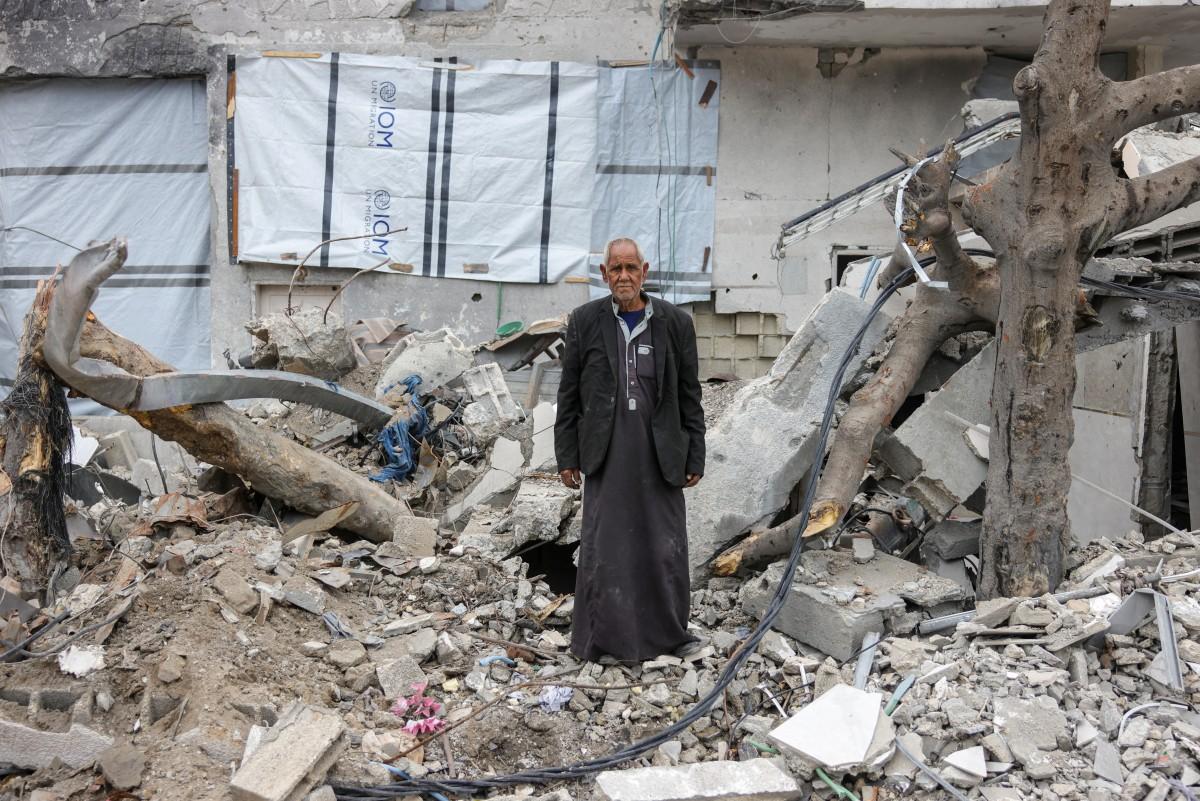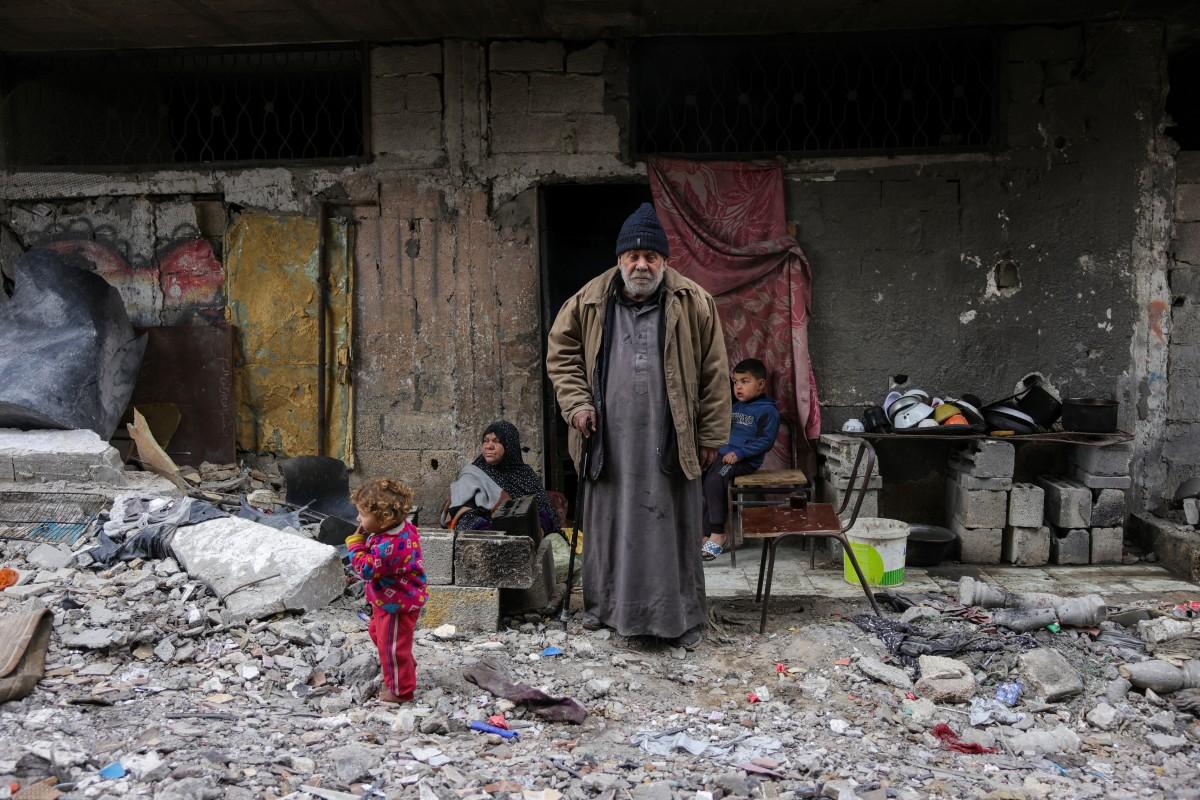The context
How can one illustrate what it’s like to be forced to flee for one’s life — and then return home? What about the before and after? And how can someone portray what they themselves have suffered?
In late January 2025, the opening of the Netzarim corridor allowed hundreds of thousands of displaced people to return to the north of Gaza, only to find their homes in ruins. In Jabalia, Bashar Taleb, an AFP photo contributor and a Gaza native, captured his neighbours and fellow Palestinians standing in front of what was once their home. Together with John Wessels, AFP Photo Chief for Israel and the Palestinian Territories, they tell this story.

The Israeli offensive, launched in response to the Hamas attacks on Israel on 7 October 2023, led to massive destruction and forced hundreds of thousands of Palestinians to flee. In January 2025, the opening of the Netzarim corridor allowed people to return to the north of Gaza. AFP moved quickly to document the return of the displaced.
The agency’s photographers have been on the ground, on the front lines, from the outset. They were among the first independent witnesses to the attacks in southern Israel, which killed more than 1,200 people and resulted in 251 people being taken hostage. They also covered, step by step, the heartbreaking story of those held in captivity.
Inside the Gaza Strip, other AFP journalists and their families found themselves trapped as Israel launched its devastating military response. Many lost their homes — several lost family members.

The idea
The idea for the project emerged when John Wessels received images from Bashar Taleb, a local photographer. “The idea came about after the Netzarim corridor to northern Gaza was opened, allowing hundreds of thousands of displaced Palestinians (including Bashar) to return to what was left of their homes. Bashar sent me images of his own destroyed house. It was those images that gave me the idea of having families — mothers, fathers — portrayed in front of the ruins of their homes. Bashar was the perfect photographer for it, as he was living the same reality.”
John immediately reached out to Bashar to pitch the project and involved Mohammed Abed, AFP’s deputy coordinator for Gaza, to oversee the logistics. “It took a few tries for it to be what I was looking for, but ultimately we produced a powerful series of portraits.”

Capturing his own reality
Bashar Taleb has been working as a photographer since the age of 14. He is not just a contributor to AFP — he is a resident of Gaza, living through the trauma of war.
“I am 35 years old and became engaged to my fiancée during the war and my displacement.” Having lost his father, he is now responsible for his family of eight. After spending months trying to keep them safe in the city of Deir al-Balah in central Gaza, he returned home only to find his neighbourhood damaged beyond recognition.
Throughout his work, Bashar documents the pain of others who, like him, have suffered immense loss. He tells the story of Basil Al-Jubeiri, 30, who lost his wife just seven months after their wedding, along with his mother, to whom he was deeply attached.
Then there is Mahmoud Awad, 37. “I found him shot five times by an Israeli sniper while trying to retrieve the body of our neighbour, who had been killed by an Israeli tank during the raid on the Saftawi neighbourhood where we all live.” Upon returning, Bashar found that Awad had been unable to receive treatment and now requires major surgery to repair his shattered leg.
One of Bashar’s most emotional encounters was with Talal Al-Asali, 64.
“When Talal Al-Asali met me in tears — I was the neighbourhood journalist, and everyone knew me — it was as if they had found someone to cry with, someone to whom they could voice their suffering in this war. Al-Asali, with tears in his eyes, told me that he had lost four of his sons. I hugged him and kissed his head — perhaps those kisses would soothe his grief and broken heart”, Bashar said.

“These are people whose stories I have heard first-hand and in detail. Every day, I try to sit with someone I know, listening to them and focusing on every detail of what they’ve lived through.”
Beyond these personal tragedies, Bashar’s photographs reveal the collapse of daily life in Gaza. Water and food are scarce, electricity is virtually non-existent, and the population struggles to survive on minimal resources. With no internet, residents gather around Bashar’s phone, hoping to send messages to loved ones.
“They all huddle around me as if I’m their only outlet to the outside world,” he said. “Life here is slowly coming to an end, and everyone is trying to survive on nothing.”

Explore our coverage. Get an AFP News free trial.
